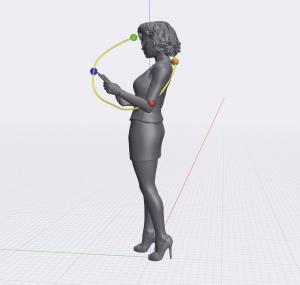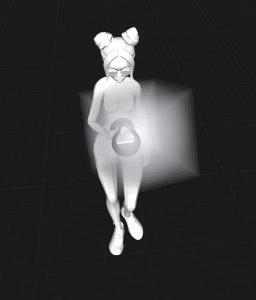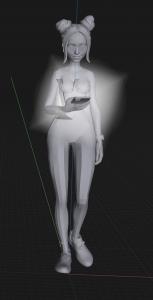New Paper Proposes 'Ring Bank Theory' — A Geometric Model for Consciousness

The printing operator moves along the dots—red (elbow opening), orange (mood), green (audio), blue (visual)—aboutness vector changing voice rapidly alongside spatially cyclic access
A new geometric model frames consciousness as rhythmic access—content emerges with latency from dynamic geometry.
The paper, titled “Ring Bank Theory of Conscious Semiosis: Baseline Dynamics and Aboutness Modulation,” is available through the decentralized science platform Desci Nodes. It forges a novel bridge between the subjective realm of phenomenology—the raw feel of experience—and the precise languages of advanced mathematics and systems neuroscience.
From a Static Picture to a Dynamic Printing Press
Most models of consciousness treat it as a state or a field to be entered. Ring Bank Theory (RBT) fundamentally reframes it as an active process of creation. Caldwell’s core thesis is that the brain does not simply receive a conscious picture; it prints it, moment by moment, using geometric rules.
“Think of it not as a movie screen, but as the projector and the filmstrip operating together,” Caldwell explains. “Consciousness is the light passing through the film, frame by frame, to create the illusion of a seamless world.”
This “printing” process relies on three core, interacting components:
The Bank (ℬ): A vast, internal 3D library of shapes and relational structures, acting as a perspective-invariant memory store. This Bank isn't static; it can be dynamically manipulated—rotated, scaled, and translated—much like objects in a 3D modeling software.
The Access Manifold (𝒜): A transient, low-dimensional “stencil” or “sampling surface” that moves across the Bank. Wherever this manifold touches, content is brought into consciousness. It defines the where and what of our immediate awareness.
The Time Schema (𝒯): A fading buffer that stacks the recent outputs of the Access Manifold, weaving these discrete “snapshots” into the smooth, continuous flow of subjective time.
This framework is radical because it inverts the standard approach. Instead of starting with sensory content (“I see a red apple”), RBT begins with the geometric and temporal mechanics of access (“How and when is the ‘apple’ sampled from memory and posed in my mental space?”). Meaning and semantics are treated as downstream consequences of this underlying geometric process.
The Mathematics of Experience: From Robotics to Inner Worlds
To move beyond metaphor, RBT grounds these ideas in rigorous mathematics. It employs operators from Lie groups—specifically the similarity (Sim(3)) and Euclidean (SE(3)) groups. These are the same mathematical tools used by roboticists to program a robot arm to grasp an object, or by game engines to control a virtual camera.
In RBT, these groups govern the “posing” of conscious content. Sim(3) describes how the entire Bank or an imaginary scene can be scaled and repositioned in your mind’s eye. SE(3) defines the precise movement and orientation of your conscious “cameras”—the Cyclopean eye for the real world and the “mind’s eye” for imagination.
The theory also introduces a crucial dynamic: the interplay between a slow, wandering baseline rhythm (likely linked to Default Mode Network activity) and a fast, context-sensitive aboutness vector (𝐶⃗ ).
“The baseline is like the idling speed of an engine,” says Caldwell. “The aboutness vector is the driver—it’s what the whole system is ‘about’ at any moment. It can modulate the Bank’s pose, steer the Access Manifold, and change the timing of the printing process to lock onto a target, whether it’s a popping popcorn kernel or a sudden memory.”
Linking Geometry to the Brain’s Rhythm Section
A key strength of the paper is its effort to connect this abstract geometry to known neural phenomena. RBT posits that its “printing operator” is not a mere analogy but a process that should leave detectable signatures in brain activity. The model makes several testable predictions:
The slow (~2 Hz) oscillations observed in dissociative states or under ketamine could represent a sluggish “global” printing cycle, with nested gamma bursts (~80 Hz) acting as the local “frame prints.” Caldwell pointed to the writings of Carl Sagan, who described “outlines of...instant appreciation,” which in context appear to describe the same “when/where” prior to “what” pipeline.
The known influence of heartbeat and respiration on perception could be explained by these internal rhythms acting as “mic signals” that modulate the printing hazard function.
The experience of “gross-to-fine” perception, where a scene resolves from a blur to sharp detail in a fraction of a second, could be a literal “spatial frequency chirp” in the Bank’s rendering process.
Caldwell cites recent work from Earl Miller’s lab at MIT on nested brain oscillations, suggesting these rhythms may be the physical implementation of the theory’s hierarchical printing process.
A Path Forward for a Testable Science of Consciousness
While speculative, Ring Bank Theory is deliberately framed to invite experimentation. It suggests that advanced EEG, MEG, and fMRI could be used to search for the specific, coordinated patterns of activity that would correspond to the posing of the Bank, the movement of the Access Manifold, and the discrete timing of conscious frames.
“The goal is to move beyond vague correlations and into mechanistic modeling,” Caldwell states. “We are proposing a formal language where the ‘hard problem’ of consciousness is broken down into a series of tractable ‘how’ questions about geometric access and temporal flow. If the brain is a geometric engine, we should be able to hear it running.”
The full text of the paper, complete with detailed diagrams, mathematical definitions, and phenomenological predictions, is available for review and discussion at 👉 Desci Nodes DPID 758/v3.
Brad Caldwell
Caldwell Contracting LLC
+1 334-332-7799
email us here
Visit us on social media:
YouTube
X
Phasic vs Interrupt Modes of Ringframe Printing in Time Schema
Legal Disclaimer:
EIN Presswire provides this news content "as is" without warranty of any kind. We do not accept any responsibility or liability for the accuracy, content, images, videos, licenses, completeness, legality, or reliability of the information contained in this article. If you have any complaints or copyright issues related to this article, kindly contact the author above.


